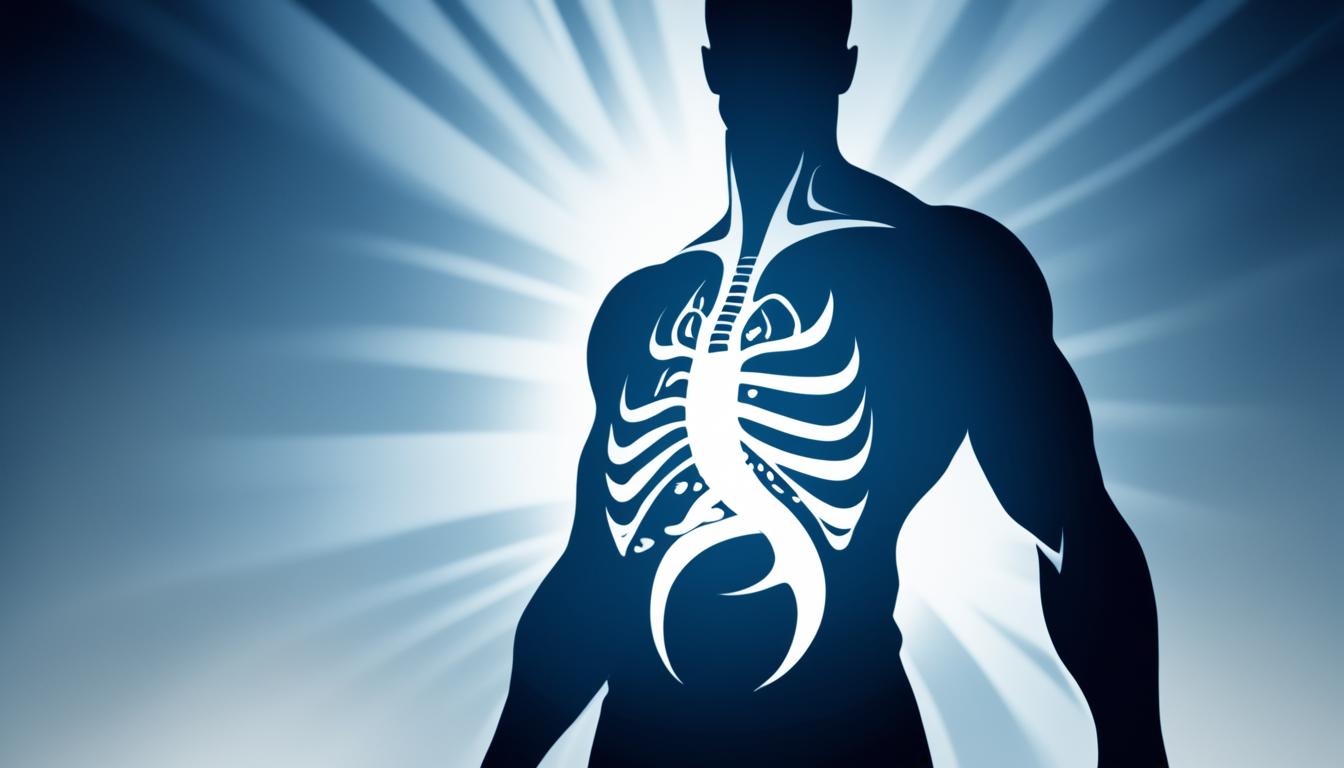Gastric cancer is a malignant tumor in the stomach lining. It ranks as the fifth most common cancer worldwide. It is also the third highest in cancer deaths. Several factors can increase the risk of getting gastric cancer. These include an infection with Helicobacter pylori, a family history, smoking, and certain diets.
Symptoms might be abdominal pain, sickness, weight loss, and blood in the stool. Early spotting of these signs is key for a better chance at treatment. Doctors use methods like endoscopy to inspect the stomach and biopsies to look for cancer cells.
Treatments range from surgery to chemotherapy and radiation therapy. More recently, stem cell therapy has shown promise. This method aims to find and get rid of the cells causing the cancer.
The outcome for someone with this cancer depends on when it’s found. If diagnosed early, chances of treating it and living longer are higher.
Key Takeaways:
- Gastric cancer is the fifth most common cancer worldwide, with a high mortality rate.
- Risk factors for gastric cancer include Helicobacter pylori infection, family history, smoking, and certain dietary factors.
- Common symptoms of gastric cancer include abdominal pain, nausea, weight loss, and blood in the stool.
- Early diagnosis through endoscopy, imaging studies, and biopsies is crucial for successful treatment.
- Treatment options for gastric cancer include surgery, chemotherapy, radiation therapy, targeted therapies, and stem cell therapy.
Risk Factors and Epidemiology of Gastric Cancer
Many things can lead to getting gastric cancer, including Gastric cancer risk factors. A major risk is having Helicobacter pylori. This is a germ in your stomach lining. It causes over 80% of gastric cancer cases.
Dietary factors matter a lot too. Eating lots of salt and not enough fruits and veggies can up your risk. People in East Asia and Eastern Europe eat like this more. That’s why they have so many cases of gastric cancer.
Smoking also raises your chances. The chemicals in cigarettes can hurt your stomach. This damage makes it more likely to have cancer there.
If gastric cancer runs in your family, you might be at risk too. Having relatives with the disease means you could get it more than others.
How often people get gastric cancer changes around the world. Places with richer folks have seen less cases lately. But it’s still a big problem in poorer and middle-income areas. This is because of lifestyle differences, less healthcare, and more risk factors.
Spotting and fixing gastric cancer early is super important. Getting checked often, especially if you’re at risk, is critical. It helps find the cancer sooner, when treatments work best.
Global Incidence Comparison
| Region | Incidence of Gastric Cancer |
|---|---|
| Eastern Asia | Highest rates observed |
| Eastern Europe | High incidence |
| North America | Moderate incidence |
| Australia and New Zealand | Low incidence |
Diagnosing and Treating Gastric Cancer
Finding out someone has gastric cancer requires many tests. These include imaging studies, endoscopy, and biopsies. They help doctors figure out the tumor’s size and type accurately.
Techniques like CT scans and MRIs are crucial. They show a clear picture of the tumor. This information guides doctors in choosing the best treatment.
Endoscopy is key in diagnosing gastric cancer too. It lets doctors look inside the stomach using a tube with a camera. They also take samples for biopsies. This confirms the cancer and tells us more about it.
For early stages, surgery is often the main treatment. The aim is to cut out the tumor and any affected lymph nodes. How much of the stomach is removed depends on the cancer’s size.
Chemotherapy can be given to kill any leftover cancer cells. It can happen before or after surgery. This therapy greatly helps in preventing the cancer from coming back.
Doctors also use radiation to fight gastric cancer. It’s sometimes used before surgery to make the tumor smaller. It can also be after surgery to ensure all cancer cells are gone.
Recently, targeted therapies have become a new hope. These treatments go after specific genetic faults in cancer cells. They’re tailored to each person’s cancer, and can be used with other therapies.
Dealing with gastric cancer takes a team effort. By using different tests and treatments, patients get the best care. This approach helps improve their chances of getting better.
| Diagnostic Methods for Gastric Cancer | Advantages | Limitations |
|---|---|---|
| Imaging Studies (CT scans, MRI) | – Visualize the tumor and determine its extent – Non-invasive imaging technique |
– Cannot provide histological diagnosis – Limited in detecting small lesions |
| Endoscopy | – Direct visualization of the stomach – Allows for biopsies to confirm diagnosis |
– Invasive procedure – Risk of complications |
| Biopsies | – Confirms the presence of cancer cells – Provides additional information about the cancer |
– Small risk of bleeding or infection |
Conclusion
Gastric cancer, known as stomach cancer, is a serious issue worldwide. It has a high death rate. Yet, there are better ways now to diagnose and treat it, giving patients more hope.
Knowing the risks, like H. pylori infection and lifestyle choices, can help stop it. Getting checked often and knowing the signs early is key for beating it.
For treating gastric cancer, different methods are used. These include surgery, chemo, and radiation. Also, new ways like stem cell treatments are being investigated.
The more we learn about treating gastric cancer, the more chances patients have. Awareness is vital to catch it early and get the best care.
It’s important for everyone to know about this cancer to fight against it. By learning and acting before it strikes, we can all help lower its impact. Working together, we can make a real change against gastric cancer.

